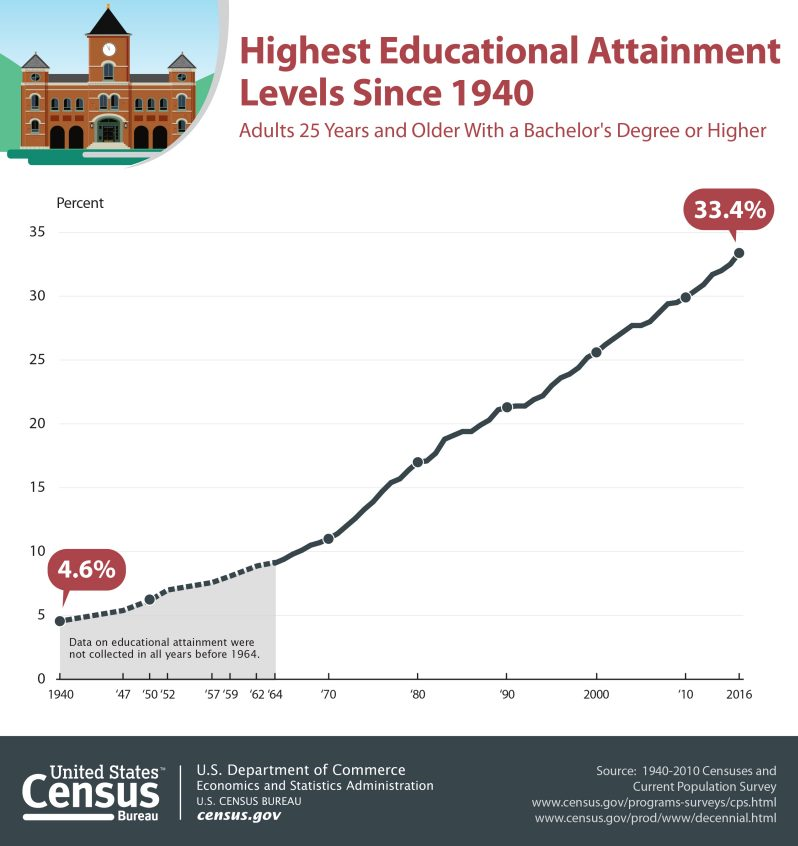 MARCH 30, 2017 — According to the US Census Bureau, more than one-third of the adult population in the United States has a bachelor’s degree or higher marking the first time in decades of data.
MARCH 30, 2017 — According to the US Census Bureau, more than one-third of the adult population in the United States has a bachelor’s degree or higher marking the first time in decades of data.
“The percentage rose to 33.4 percent in 2016, a significant milestone since the Current Population Survey began collecting educational attainment in 1940,” said Kurt Bauman, Chief of the Education and Social Stratification Branch. “In 1940, only 4.6 percent had reached that level of education.”
In 2010, less than 30 percent of those 25 and older had completed a bachelor’s degree or higher, and in 2006, 28 percent had reached that level of education.
These findings come from the U.S. Census Bureau’s Educational Attainment in the United States: 2016 table package that uses statistics from the Current Population Survey Annual Social and Economic Supplement to examine the educational attainment of adults ages 25 and older by demographic and social characteristics, such as age, sex, race and Hispanic origin, nativity and disability status.
The data also found that the average earnings in 2016 for those ages 25 and older whose highest educational attainment was high school were $35,615. The average earnings for those with a bachelor’s degree were $65,482 compared with $92,525 for those with an advanced degree.
Other highlights:
- The Asian and non-Hispanic white populations were more likely to hold a bachelor’s degree or higher, 55.9 percent and 37.3 percent, respectively, when compared with the black population at 23.3 percent and the Hispanic population at 16.4 percent in 2016.
- Of the U.S. population 25 years and older, 89.1 percent had completed high school (or equivalent) or more education in 2016. A decade earlier, in 2006, 85.5 percent had completed high school or more education.
- In 2016, average earnings for males age 25 and older whose highest educational attainment was high school were $41,942. By comparison, average earnings among females in this category in 2016 were $26,832.
- In 2016, average earnings for males age 25 and older with a bachelor’s degree were $79,927. By comparison, average earnings for females in this category in 2016 were $50,856.
- Bachelor’s degree attainment varied by citizenship and nativity. The native born were more likely than the foreign-born to have a bachelor’s degree or higher (33.6 percent vs 32.4 percent). Among the foreign-born, 38.4 percent of naturalized citizens had a bachelor’s degree or higher, compared with 26.5 percent of noncitizens.
The Current Population Survey, sponsored jointly by the U.S. Census Bureau and the U.S. Bureau of Labor Statistics, is the primary source of labor force statistics for the population of the United States
